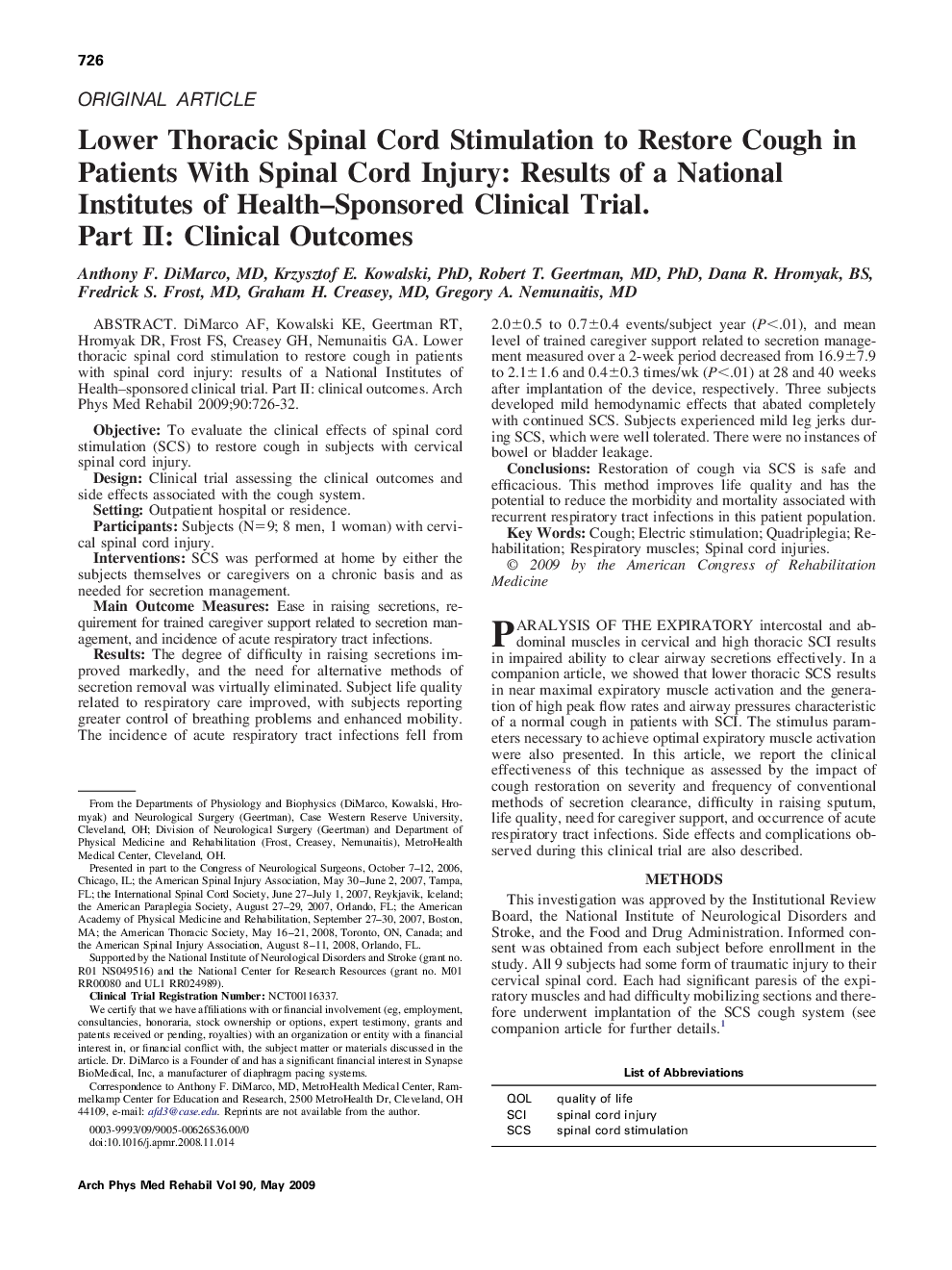| کد مقاله | کد نشریه | سال انتشار | مقاله انگلیسی | نسخه تمام متن |
|---|---|---|---|---|
| 3449482 | 1595766 | 2009 | 7 صفحه PDF | دانلود رایگان |

DiMarco AF, Kowalski KE, Geertman RT, Hromyak DR, Frost FS, Creasey GH, Nemunaitis GA. Lower thoracic spinal cord stimulation to restore cough in patients with spinal cord injury: results of a National Institutes of Health–sponsored clinical trial. Part II: clinical outcomes.ObjectiveTo evaluate the clinical effects of spinal cord stimulation (SCS) to restore cough in subjects with cervical spinal cord injury.DesignClinical trial assessing the clinical outcomes and side effects associated with the cough system.SettingOutpatient hospital or residence.ParticipantsSubjects (N=9; 8 men, 1 woman) with cervical spinal cord injury.InterventionsSCS was performed at home by either the subjects themselves or caregivers on a chronic basis and as needed for secretion management.Main Outcome MeasuresEase in raising secretions, requirement for trained caregiver support related to secretion management, and incidence of acute respiratory tract infections.ResultsThe degree of difficulty in raising secretions improved markedly, and the need for alternative methods of secretion removal was virtually eliminated. Subject life quality related to respiratory care improved, with subjects reporting greater control of breathing problems and enhanced mobility. The incidence of acute respiratory tract infections fell from 2.0±0.5 to 0.7±0.4 events/subject year (P<.01), and mean level of trained caregiver support related to secretion management measured over a 2-week period decreased from 16.9±7.9 to 2.1±1.6 and 0.4±0.3 times/wk (P<.01) at 28 and 40 weeks after implantation of the device, respectively. Three subjects developed mild hemodynamic effects that abated completely with continued SCS. Subjects experienced mild leg jerks during SCS, which were well tolerated. There were no instances of bowel or bladder leakage.ConclusionsRestoration of cough via SCS is safe and efficacious. This method improves life quality and has the potential to reduce the morbidity and mortality associated with recurrent respiratory tract infections in this patient population.
Journal: Archives of Physical Medicine and Rehabilitation - Volume 90, Issue 5, May 2009, Pages 726–732